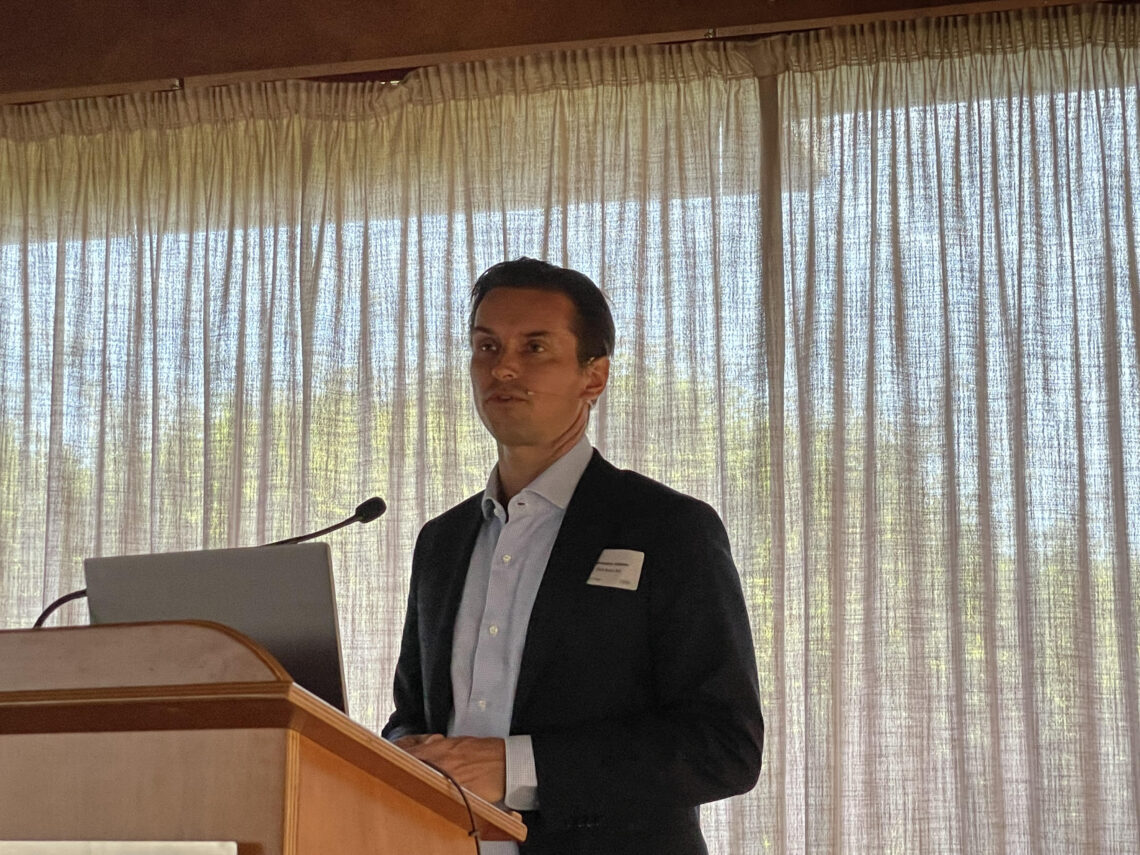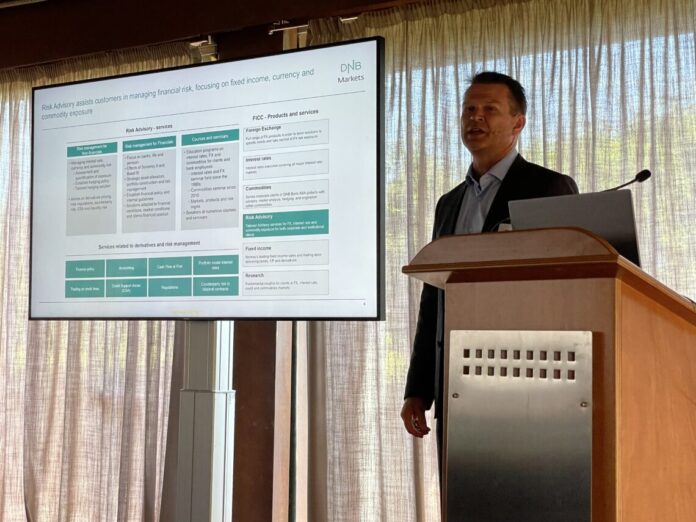Here are DNB’s tips for the salmon price – and managing the risk associated with this.
Fish Pool and DNB kick off the big seafood fair in Barcelona on Monday afternoon. Not surprisingly, the high-flying salmon price was the big topic during a seminar at the five-star Hotel Miramar, on a hill near the port of Barcelona.
Ståle Johansen works with risk management and contract strategy within currency, commodity prices and interest rates in DNB. The problem is particularly relevant with a backdrop where the salmon price has doubled in four months. On Friday, the salmon price was clocked at close to NOK 130 (€13) per kilo – sky high over previous top quotes.
What happens next?
“The question is what happens next?” Johansen asked. “Will prices return to normal around the 60s (NOK)? We do not really believe that,” he revealed.
“The situation is quite dramatic for the end customer’s prices,” he remarked.
Johansen says he thinks “the risk is on upside”, when he sees how limited liquidity there is in a market characterized by rising interest rates and commodity prices.
“When the sellers come back, I think they are talking about “80s”, at least for this year, and it is quite special.”
“Do we have anyone who believes the 60s (NOK) for the summer?” Johansen asks rhetorically, as he looks out over the assembly, which largely consists of buyers and sellers of salmon, before he himself answers: “I do not think so. This is a liquidity issue.”
Security
He notes that the large salmon farmers; Mowi, Grieg, Lerøy, SalMar, Bakkafrost and NRS, hedge (secures – editor’s note) about a third of fish sales on contracts. Johansen therefore argues that investors should hedge their investments in addition to the exposure in salmon stocks.
Johansen’s colleague, salmon analyst Alexander Aukner, notes that DNB Markets expects a global fall in the supply of salmon by one percent in 2022.

“We are struggling to see where there will be significant production growth from the traditional salmon-producing regions,” Aukner says.
“We have land-based fish farms, which should actually add some salmon to the market, but there have been challenges with financing for several players, at the same time as market leader Atlantic Sapphire has struggled with biological challenges.”
Cautious
Aukner predicts 71 kroner (€7.26) on average for the salmon price in 2022.
“We already see now that this is on the cautious side. It can easily be ten kroner higher than that. I also believe that prices will be quite robust also in 2023 and 2024. It will come down from current levels, but the question is where it will stabilize.”
“The salmon price is 30-40 percent higher than before the all time high. We struggle to update our spreadsheets quickly enough, in fact,” Aukner admits.
There are several risk elements that can stop the price party for the farmers, says Aukner, emphasizes taxes in particular, but also cost inflation, a new (anti-farming) president in Chile and an escalating war in Ukraine.

